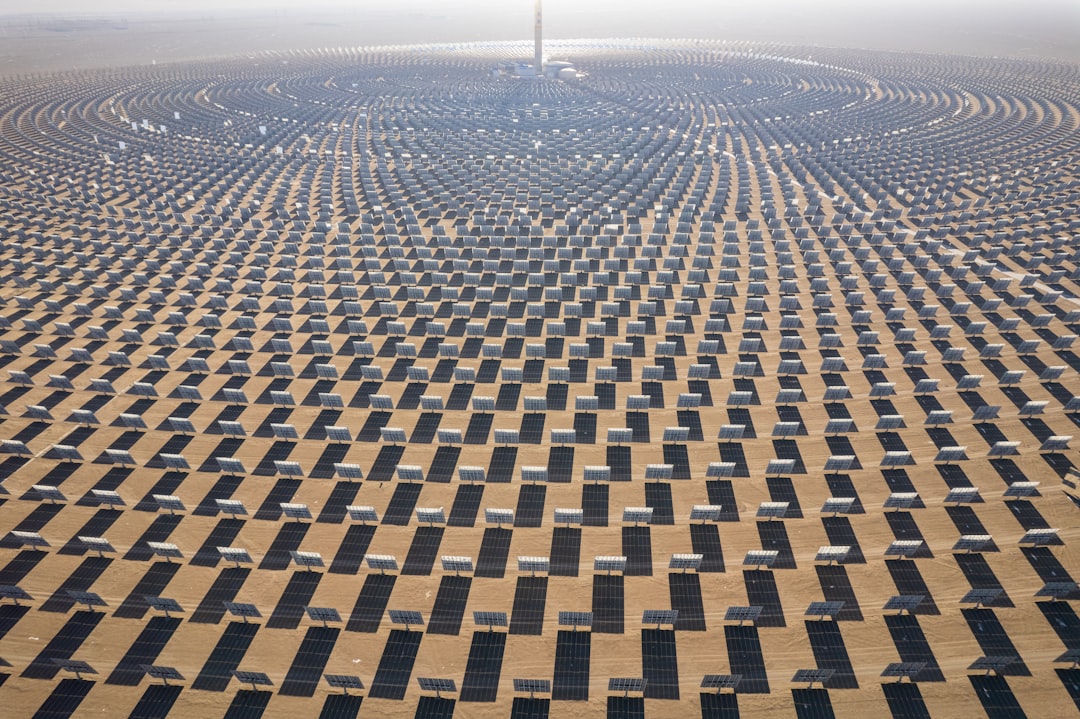Concentrated Solar Power
Concentrated Solar Power (CSP) utilizes mirrors or lenses to focus sunlight, generating heat for electricity via turbines. This technology offers a renewable energy solution with the potential to provide continuous power supply through advanced storage methods.

Example Solar Companies
Sourced by HolonIQ
Allume Energy
Aurora Solar
Cygni Energy
Danen
Free Spirits
Gham Power
Greatcell Solar
Gridcogniton
Infiction Labs
ME SOLshare
NRG Solutions
Okra Solar
Oorja Development Solutions Limited
Positive Energy
RayGen Resources
Renkube
SafEarth
SenseHawk
Sinosoar
Skilancer Solar
Solaris Synergy
SunSawang
Sunseap
SwitchDin
The Solar Labs
YOLK
Overview
Concentrated Solar Power (CSP) utilizes mirrors or lenses to focus sunlight, generating heat for electricity via turbines. This technology offers a renewable energy solution with the potential to provide continuous power supply through advanced storage methods.
Progress Made
Significant advancements have been made in CSP technologies and practices:
- Fresnel Mirrors: Thinner, lighter mirrors concentrate solar radiation over larger areas, boosting efficiency.
- Molten Salt Storage: Molten salt stores solar energy for up to 12 hours, enabling power generation during non-sunny periods.
- Leading Innovators: Companies like SolarReserve, BrightSource Energy, and Abengoa Solar are pioneering large-scale CSP plants.
Solutions by Sector
Utility-Scale Power Generation
- Heliostat Fields: Arrays of mirrors that track the sun and focus sunlight onto a central receiver.
- Solar Towers: Central receivers that collect focused sunlight to generate high temperatures for power production.
- Parabolic Troughs: Curved mirrors that concentrate sunlight onto a receiver tube, heating a fluid to generate steam.
Case Studies:
- Ivanpah Solar Electric Generating System, USA: World's largest solar thermal power plant using heliostat technology (BrightSource Energy).
- Crescent Dunes Solar Energy Project, USA: Utilizes molten salt for energy storage, providing 10 hours of full-load power (SolarReserve).
- Noor Ouarzazate Solar Complex, Morocco: One of the world's largest CSP plants, combining multiple CSP technologies (Abengoa Solar).
Industrial Applications
- Process Heat: Using CSP to provide high-temperature heat for industrial processes.
- Desalination: Utilizing CSP to power desalination plants for freshwater production.
- Enhanced Oil Recovery: Applying CSP to generate steam for extracting oil from reservoirs.
Case Studies:
- Aalborg CSP's Industrial Heat Projects: Provides process heat for various industrial applications (Aalborg CSP).
- Masdar's CSP Desalination Pilot, UAE: Demonstrates the feasibility of using CSP for seawater desalination (Masdar).
- GlassPoint Solar's Enhanced Oil Recovery, Oman: Uses CSP to generate steam for oil extraction (GlassPoint Solar).
Residential and Community Power
- Distributed CSP Systems: Small-scale CSP installations for residential and community power needs.
- Hybrid Systems: Combining CSP with other renewable energy sources for reliable power supply.
- Energy Storage Solutions: Implementing advanced storage technologies to ensure continuous power availability.
Case Studies:
- Himin Solar's Residential CSP Systems, China: Provides small-scale CSP solutions for residential heating and power (Himin Solar).
- TSK Group's Community Power Projects, Spain: Develops CSP projects for local communities (TSK Group).
- BrightSource Energy's Hybrid CSP Projects, USA: Combines CSP with other renewable energy sources for enhanced reliability (BrightSource Energy).
Lessons Learned
- Early Stage Challenges: Energy storage during non-sunny times remains a significant challenge.
- Mixed Results: Failures alongside successes like SolarReserve's 10-hour energy storage plant.
- Importance of R&D: Not investing early enough in research and development has hindered progress.
- Future Focus: Energy storage solutions are pivotal for making CSP effective for climate change reversal.
Challenges Ahead
- High Initial Costs: CSP plant construction requires substantial initial investment.
- Large Land Areas: CSP plants need extensive land, posing a challenge in land-scarce regions.
- Sunlight Requirement: Efficiency relies on abundant sunlight, posing issues in areas with limited sun.
- Water Requirement: Cooling needs water, which can be problematic in water-scarce areas.
- Energy Storage: Storing generated energy for non-sunny periods remains a technical challenge.
Best Path Forward
- Increase Awareness: Educate the public about CSP's potential in climate mitigation.
- Financial Incentives: Offer incentives to encourage investment in CSP technology.
- Collaborate with Utilities: Integrate CSP into the grid in partnership with utility companies.
- New CSP Plants: Support the development of new CSP plants.
- Leading Initiatives: Solar Energy Industries Association, National Renewable Energy Laboratory, BrightSource Energy driving progress.
Image credit: Unsplash